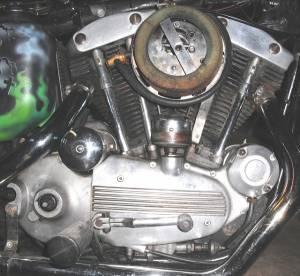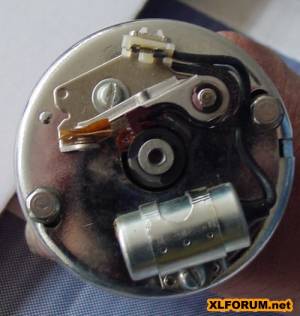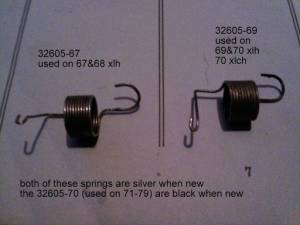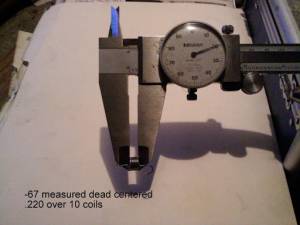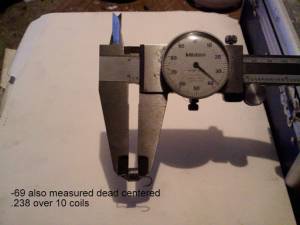Table of Contents
This is an old revision of the document!
IH: Engine Control - Sub-01A
Battery Ignition (circuit breaker/timer)
57-78 Sportsters (except XLC and XLCH)
- The circuit breaker ignition system has two circuits; (1)-the primary and (2)-the secondary circuits. 1)
- The primary circuit includes the battery, switch, primary coil and the breaker points.
- The secondary circuit consists of the secondary coil and the spark plugs.
- The breaker cam and contact points open and close the low tension circuit between the battery and the ignition coil.
(which causes the coil to produce high voltage discharge to the spark plugs) - The circuit breaker also times the discharge for proper engine firing.
External Circuit Breaker (57-70)
- The circuit breaker ignition was not factory installed on XLCH engines.
- However, they provide consistent lighting for riding at night.
- The magneto has been changed out to a circuit breaker ignition on many XLCHs
| Circuit breaker ignition on a 70 model XLCH 4) |
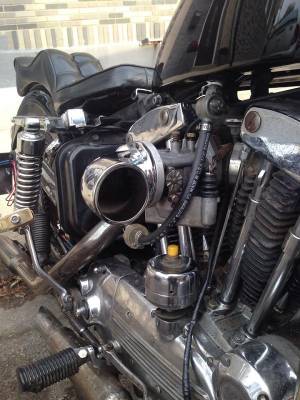 |
Internal Circuit Breaker (71-78)
Roll Pin
AKA “split pins”. These are hollow pins that have a split in them and are held in holes by their own spring tension. 5)
It is possible to have it 180° out by mashing down the pin while tightening everything up. 6)
It's also common for the breaker cam pin to be sheared off flush with the base and covered in grime so you can't tell the correct orientation for the cam.
It'll install both ways like this, but only one position will fire the plugs correctly. 7)
If the first roll pin is pushed too deep, it can cause problems with getting both gaps even.
It will cock the advanced unit and not let it seat flush on the cam. 8)
If the bike will backfire, spit and cough very badly with the cam plate adjusted,
Check for missing, bent or destroyed roll pins on the plate. 9)
| The 1st roll pin is on the top side of timing plate assembly. 10) | The 2nd roll pin is on the back side of the timing plate assembly. 11) | During installation, the back side roll pin aligns with the notch in the #2 cam 12) |
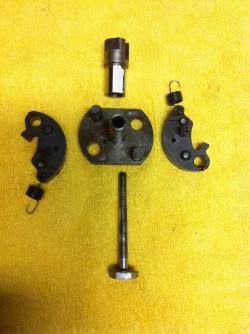 | 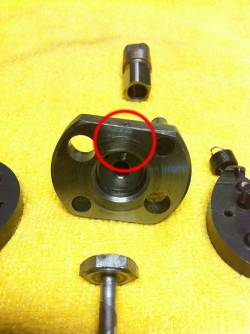 | 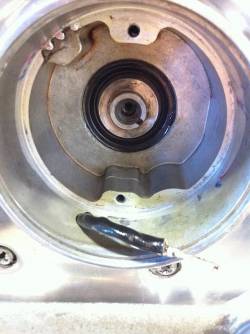 |
Contact Points
Single Contact Points - Manual Advance
A single contact point circuit breaker is operated by a cam with a narrow lobe and a wide lobe. 13)
- The narrow lobe times the front cylinder.
- The wide lobe times the rear cylinder.
- A single ignition coil fires both spark plugs at the same time.
- One cylinder on compression stroke, firing the combustion gas creating the power stroke.
- The other cylinder through the exhaust stroke.
- Timing is advanced or retarded by manually rotating the circuit breaker base in relation to the breaker cam.
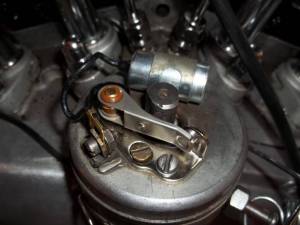 | 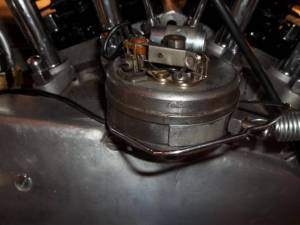 |
| Single Point Circuit Breaker on a 57 XL 14) | |
Single Contact Points - Auto Advance
The single set of points are operated the same way as the manual advance (by a cam with a narrow lobe and a wide lobe) with the addition flyweights.
(the spark timing cam is advanced automatically with engine speed) 15)
- The narrow lobe times the front cylinder.
- The wide lobe times the rear cylinder.
- A single ignition coil fires both spark plugs at the same time.
- One cylinder on compression stroke, firing the combustion gas creating the power stroke.
- The other cylinder through the exhaust stroke.
- Timing is advanced or retarded with an increase or decrease of engine speed by the action of the flyweights.
Dual Contact Points
Two independent sets of points are operated by separate cam lobes (each having it's own cam). 16)
- Each breaker cam opens the points individually which fires to the alternate cylinders with every revolution of the crankshaft
- Dual ignition coils (one for each spark plug) fire each cylinder independently.
- Timing is advanced or retarded by the breaking of each set of points by the single lobe cam on the timer shaft.
Auto Advance / Breaker Weight Springs
- Starting on January 3, 1969, the MoCo changed the size of the wire of the two ignition timer weight springs on Electra Glide and Sportster models to increase the speed at which timing advance occurred. This was to insure that the spark timing would be fully retarded at cranking speed and will advance gradually as RPMs increase to the fully advanced position. 17)
- Auto advance 1st appeared on the 1965 XLH. It was also used on the 1966 XLH also. 18)
- The black -70 springs in these timers don't seem to work nearly as good as when using either -67 or -69. 23)
| 1967-1968 XLH | 32605-67 using (0.022“ wire) - fully advanced at 1600 RPM 24) |
| 1969-1970 XLH 1970 XLCH | 32605-69 using (0.016” wire) - fully advanced at 900 RPM 25) |
| 1971-1979 XLH / XLCH | 32605-70 26) |
- Before checking ignition timing, remove the circuit breaker plate nuts and plate cover to make sure the flyweights will move freely. The cam must return back to retarded position when the engine is stopped. If it doesn't retard fully, it usually causes failure of the starter drive. 29)
- Also, on 1967 and later models, make sure that the bent end of the flyweight spring is hooked through the bottom hole and the upper loop grips the retaining groove in the pin tightly. 30)
- Replace the breaker plate cover and set the point gap at 0.020“ before checking / setting the advance timing. 31)
Circuit Breaker Cam
The circuit breaker cam, or ignition timer cam, (newly designed for the 1971 model year) was redesigned for the 1972 model year and was recommended as a replacement for parts order on 1971 model Sportster, Electra Glide and Super Glide models. The 1971 (32542-70) cam had a more rounder profile while the 1972 cam (32542-70A) was more radical with sharper corners at the sides with a flat or straight edge ascend to the cam top center from each side. The 1972 cam allowed greater range in point gap adjustment making (the adjustment less critical) and timing more consistent from cylinder to cylinder. Point gap specs remained the same between the two cams but the dwell changed from 90° to 140° with the '72 cam.
| Ignition Timer Cam | ||
| 1965-1970 | XLH | 32542-64A |
| 1970 | XLCH | 32542-64A |
| 1971 | XLH/XLCH | 32542-70 (original) |
| 1971-1978 | XLH/XLCH | 32542-70A (new design) |

